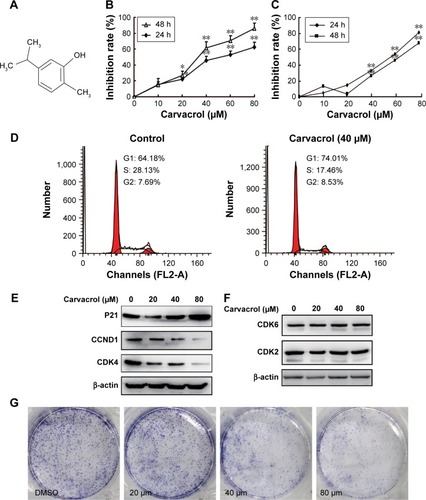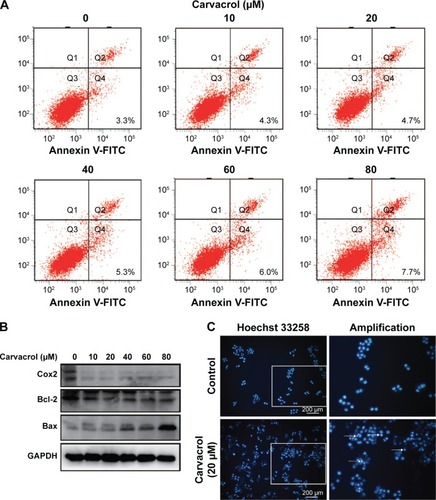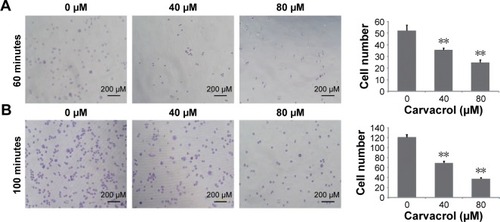Figures & data
Figure 1 Carvacrol suppresses proliferation in human tongue cancer cells.
Abbreviation: DMSO, dimethyl sulfoxide.

Figure 2 Carvacrol promoted cell apoptosis in Tca-8113 cells.

Figure 3 Carvacrol inhibited the adherence of Tca-8113 cancer cells.

Figure 4 Carvacrol inhibits Tca-8113 cell migration and invasion.

